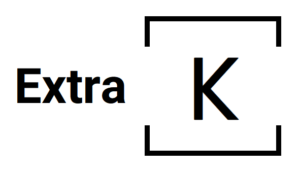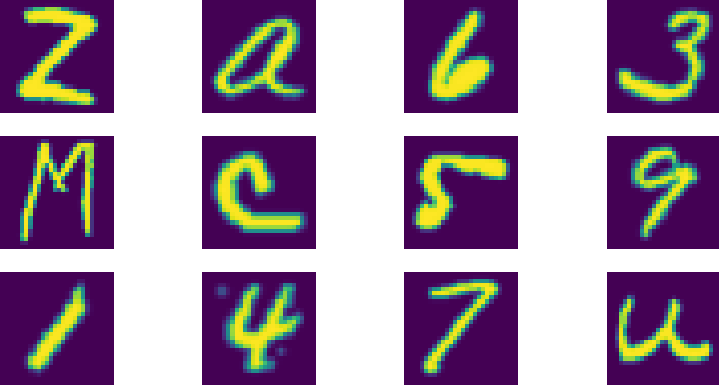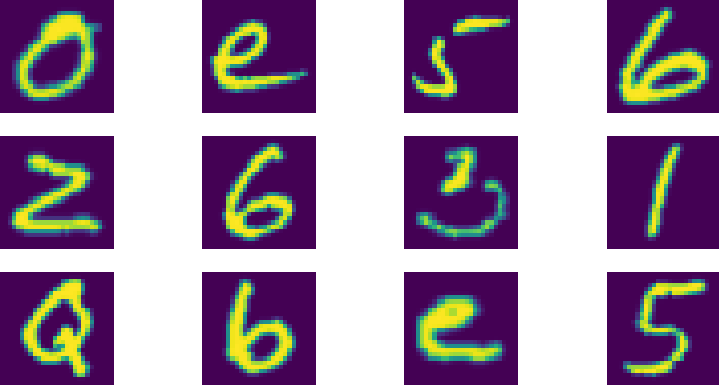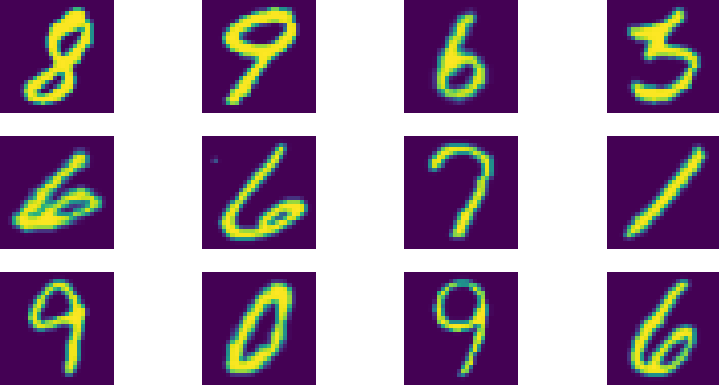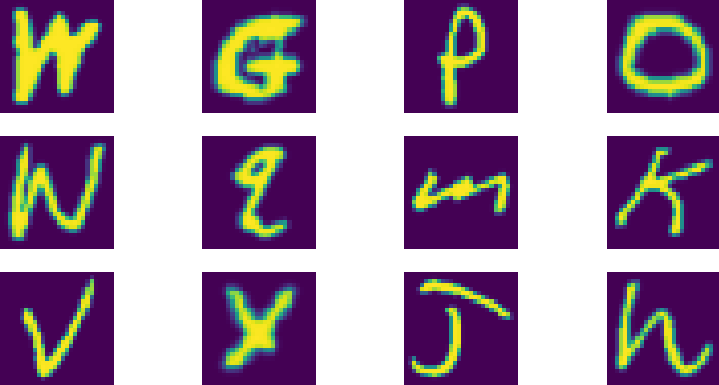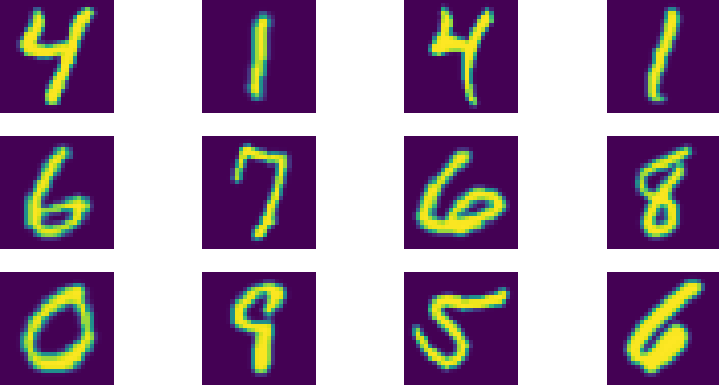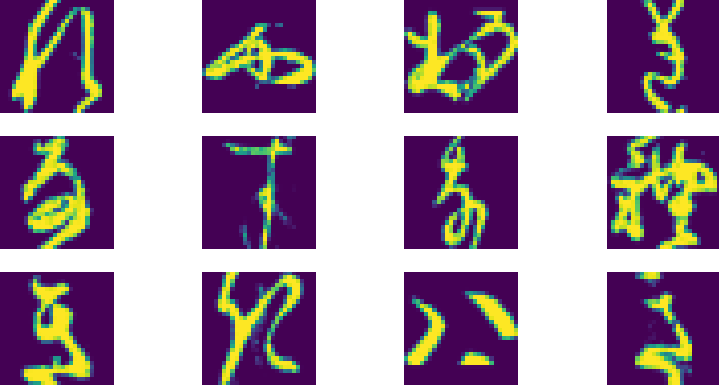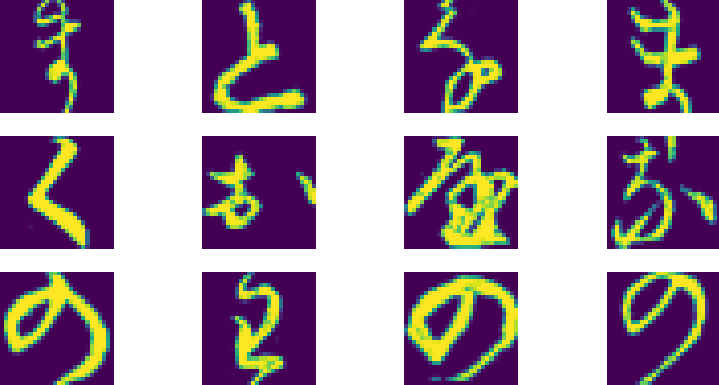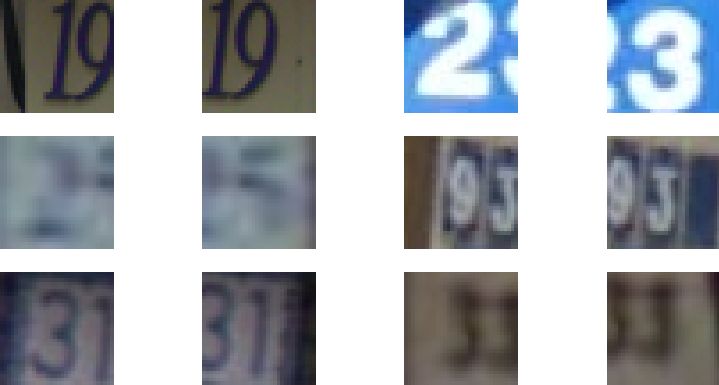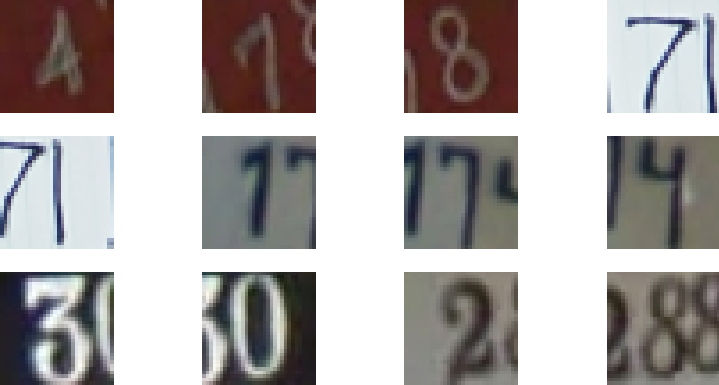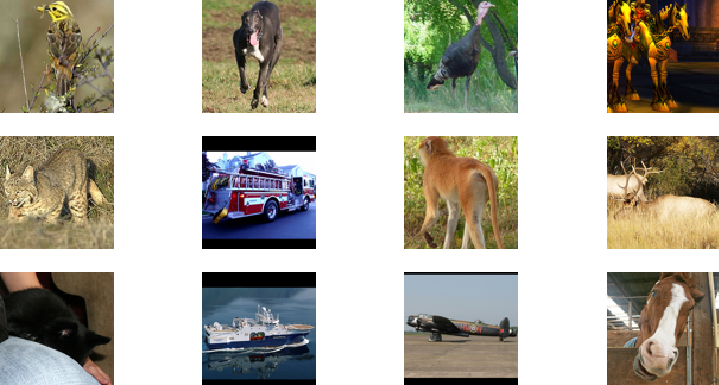Thanks to modern deep learning frameworks like Keras, it's very easy to use particular datasets - which are included in the framework by default. However, the amount of datasets available is often quite low, as the creators likely have more important things to do than integrate all public datasets that are available on the Internet.
This blog post introduces the extra-keras-datasets module, which extends tensorflow.keras.datasets with additional ones. So far, we've included the EMNIST dataset, the KMNIST ones, as well as SVHN and STL-10, and we're adding more regularly.
Let's explore these new Keras datasets!
Update 16/Nov/2020: made the references to keras.datasets compatible with TensorFlow 2.x.
The Keras Datasets module
In a different blog post, we explored the Keras Datasets module. The module, which can be used in your Keras models by importing tensorflow.keras.datasets, allows you to load datasets very easily: often, it's simply enough to call load_data() and there you go.
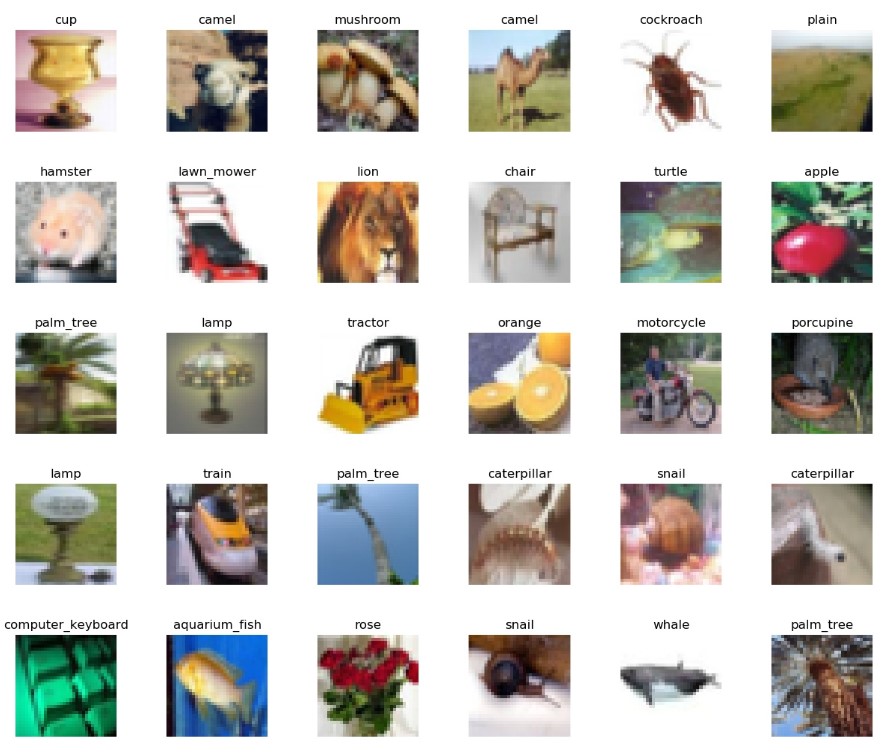
The module contains various image recognition datasets - being MNIST, CIFAR-10, CIFAR-100, Fashion-MNIST - as well as text classification datasets - Reuters Newswires and IMDB sentiment - and a regression dataset (Boston House Prices).
However, the number of datasets is relatively small, especially when you're experimenting a lot (such as for my blog posts on MachineCurve. I'll usually use MNIST or the CIFAR datasets, but I'm a bit fed up with them). However, importing various other datasets requires quite some extra code, which makes the explanations with regards to the Keras models less accessible for beginners. Unfortunately, no module is available to support additional datasets.... until now!
Say hi to Extra Keras Datasets
The Extra Keras Datasets module is a drop-in replacement for tensorflow.keras.datasets. Under the license provided by Keras, it makes use of its way of downloading data, and offers the same load_data() definition to load particular datasets.
So far, we support a small range of additional datasets, and we're extending on a daily to weekly basis. These are the datasets supported so far:
- EMNIST
- KMNIST
- SVHN
- STL-10
Before we continue with exploring the datasets themselves, let's take a look at the installation procedure first, so that you can start straight away :)
Installing the Extra Keras Datasets
The installation process is fairly straight-forward:
pip install extra-keras-datasets
It should also check for and if necessary install the dependencies that are required to run it successfully.
Let's now take a look at which datasets are available :)
EMNIST
The EMNIST dataset, which stands for Extended MNIST, is an extension of the MNIST dataset based on the original NIST dataset. It comes in multiple flavors:
- Balanced, which contains a balanced number of letters and digits.
- ByClass, which is unbalanced.
- ByMerge, which is also unbalanced.
- Digits, which are the digits only.
- Letters, which are the letters only.
- Classic MNIST, which is the MNIST dataset as we know it.
Let's now take a look at these datasets in a bit more detail.
Balanced
The balanced dataset contains digits as well as uppercase and lower handwritten letters. It contains 131.600 characters across 47 balanced classes.
from extra-keras-datasets import emnist
(input_train, target_train), (input_test, target_test) = emnist.load_data(type='balanced')
ByClass
The byClass dataset also contains digits as well as upper case and lowercase letters, but it's unbalanced. Hence, the dataset is substantially larger, with 814.255 characters across 62 unbalanced classes. The classes for this dataset are [0-9], [a-z] and [A-Z] (Cohen et al., 2017).
from extra-keras-datasets import emnist
(input_train, target_train), (input_test, target_test) = emnist.load_data(type='byclass')
ByMerge
The same is true for byMerge, but it's built up slightly differently. It also contains 814.255 characters, but has 47 unbalanced classes only. It merges classes where similarity between uppercase and lowercase letters is too large, possibly confusing your model. The merged classes are C, I, J, K, L, M, O, P, S, U, V, W, X, Y and Z, resulting in 47 insteaad of 62 classes (Cohen et al., 2017).
from extra-keras-datasets import emnist
(input_train, target_train), (input_test, target_test) = emnist.load_data(type='bymerge')
Digits
The digits dataset contains 280.000 characters across 10 balanced classes; these are the digits only.
from extra-keras-datasets import emnist
(input_train, target_train), (input_test, target_test) = emnist.load_data(type='digits')
Letters
The letters dataset contains 145.600 characters across 26 balanced classes; these are the handwritten letters only.
from extra-keras-datasets import emnist
(input_train, target_train), (input_test, target_test) = emnist.load_data(type='letters')
Classic MNIST
The mnist dataset is actually the same as traditional MNIST, with 70.000 characters across 10 balanced classes, equaling tensorflow.keras.datasets.mnist.
from extra-keras-datasets import emnist
(input_train, target_train), (input_test, target_test) = emnist.load_data(type='mnist')
KMNIST
Kuzushiji-MNIST
This is a drop-in replacement for MNIST, but then with 70.000 28x28 images of Japanese Kuzushiji characters. These are considered to be slightly more difficult than the digits of the MNIST dataset.
from extra-keras-datasets import kmnist
(input_train, target_train), (input_test, target_test) = kmnist.load_data(type='kmnist')
Kuzushiji-49
This is an extension of the Kuzishiji-MNIST dataset, offering 270.912 images across 49 classes.
from extra-keras-datasets import kmnist
(input_train, target_train), (input_test, target_test) = kmnist.load_data(type='k49')
SVHN
The Street View House Numbers dataset (SVHN) contains 32x32 cropped images of house numbers obtained from Google Street View.
Normal
The normal variant contains 73.257 digits for training and 26.032 for testing.
from extra-keras-datasets import svhn
(input_train, target_train), (input_test, target_test) = svhn.load_data(type='normal')
Extra
The extra dataset extends the normal one with 531.131 extra samples, which are less difficult (Netzer et al., 2011). The dataset then totals 604.388 digits for training and 26.032 digits for testing.
from extra-keras-datasets import svhn
(input_train, target_train), (input_test, target_test) = svhn.load_data(type='extra')
STL-10
The STL-10 dataset is an image recognition dataset for developing unsupervised feature learning, deep learning, self-taught learning algorithms. It contains 5.000 training images and 8.000 testing images, and represents 10 classes in total (airplane, bird, car, cat, deer, dog, horse, monkey, ship, truck).
from extra-keras-datasets import stl10
(input_train, target_train), (input_test, target_test) = stl10.load_data()
Summary
In this blog post, we've introduced the extra-keras-datasets module. It extends the original tensorflow.keras.datasets module with additional datasets. So far, the EMNIST, KMNIST, SVHN and STL-10 datasets have been made available for easy use. We're extending this dataset on a weekly to monthly basis, so stay tuned! :)
Thank you for reading MachineCurve today and happy engineering! 😎
References
Cohen, G., Afshar, S., Tapson, J., & van Schaik, A. (2017). EMNIST: an extension of MNIST to handwritten letters. Retrieved from http://arxiv.org/abs/1702.05373
Clanuwat, T., Bober-Irizar, M., Kitamoto, A., Lamb, A., Yamamoto, K., & Ha, D. (2018). Deep learning for classical Japanese literature. arXiv preprint arXiv:1812.01718. Retrieved from https://arxiv.org/abs/1812.01718
Netzer, Y., Wang, T., Coates, A., Bissacco, A., Wu, B., & Ng, A. Y. (2011). Reading digits in natural images with unsupervised feature learning. Retrieved from http://ufldl.stanford.edu/housenumbers/nips2011_housenumbers.pdf
http://ufldl.stanford.edu/housenumbers/
Coates, A., Ng, A., & Lee, H. (2011, June). An analysis of single-layer networks in unsupervised feature learning. In Proceedings of the fourteenth international conference on artificial intelligence and statistics (pp. 215-223). Retrieved from http://cs.stanford.edu/~acoates/papers/coatesleeng_aistats_2011.pdf

Hi, I'm Chris!
I know a thing or two about AI and machine learning. Welcome to MachineCurve.com, where machine learning is explained in gentle terms.
Getting started
Foundation models
Learn how large language models and other foundation models are working and how you can train open source ones yourself.
Keras
Keras is a high-level API for TensorFlow. It is one of the most popular deep learning frameworks.
Machine learning theory
Read about the fundamentals of machine learning, deep learning and artificial intelligence.
Most recent articles
January 2, 2024
What is Retrieval-Augmented Generation?
December 27, 2023
In-Context Learning: what it is and how it works
December 22, 2023
CLIP: how it works, how it's trained and how to use it
Article tags
Most popular articles
February 18, 2020
How to use K-fold Cross Validation with TensorFlow 2 and Keras?
December 28, 2020
Introduction to Transformers in Machine Learning
December 27, 2021
StyleGAN, a step-by-step introduction
July 17, 2019
This Person Does Not Exist - how does it work?
October 26, 2020
Your First Machine Learning Project with TensorFlow 2.0 and Keras
Connect on social media
Connect with me on LinkedIn
To get in touch with me, please connect with me on LinkedIn. Make sure to write me a message saying hi!
Side info
The content on this website is written for educational purposes. In writing the articles, I have attempted to be as correct and precise as possible. Should you find any errors, please let me know by creating an issue or pull request in this GitHub repository.
All text on this website written by me is copyrighted and may not be used without prior permission. Creating citations using content from this website is allowed if a reference is added, including an URL reference to the referenced article.
If you have any questions or remarks, feel free to get in touch.
TensorFlow, the TensorFlow logo and any related marks are trademarks of Google Inc.
PyTorch, the PyTorch logo and any related marks are trademarks of The Linux Foundation.
Montserrat and Source Sans are fonts licensed under the SIL Open Font License version 1.1.
Mathjax is licensed under the Apache License, Version 2.0.
